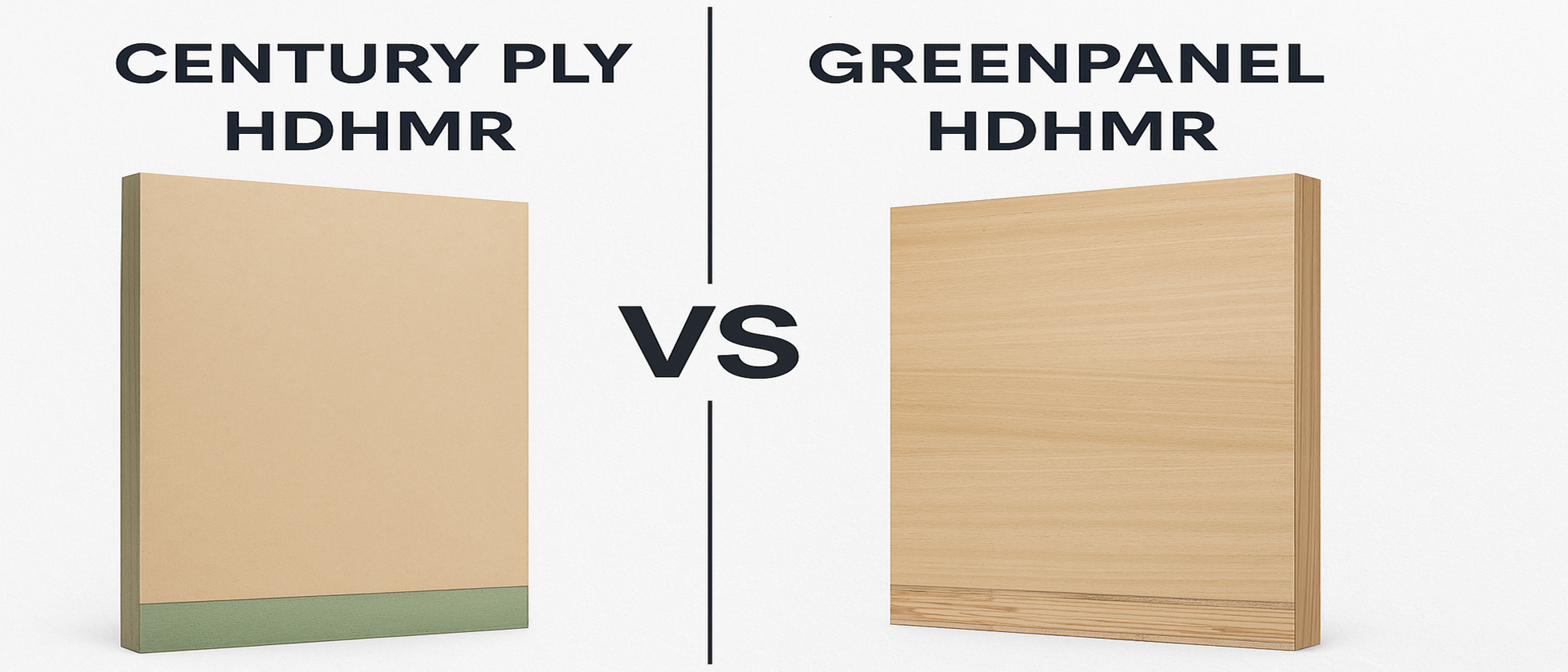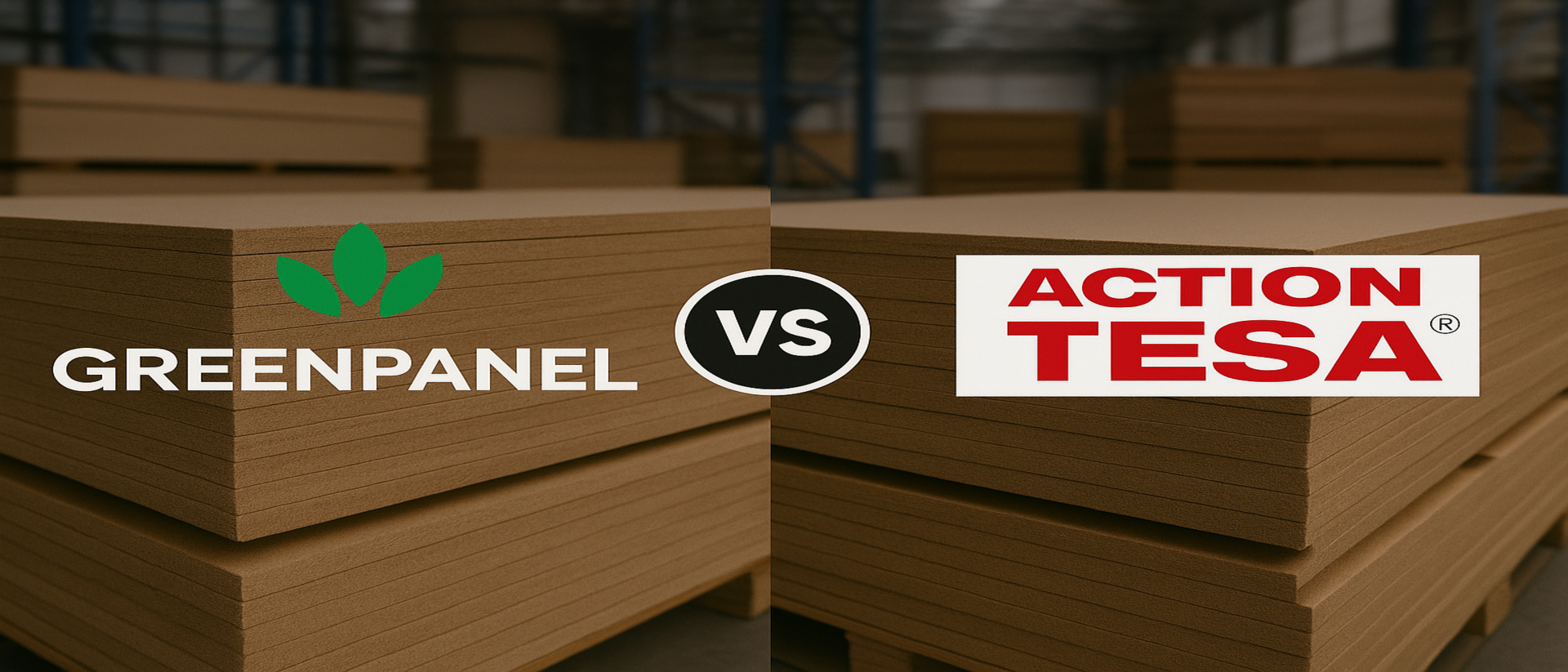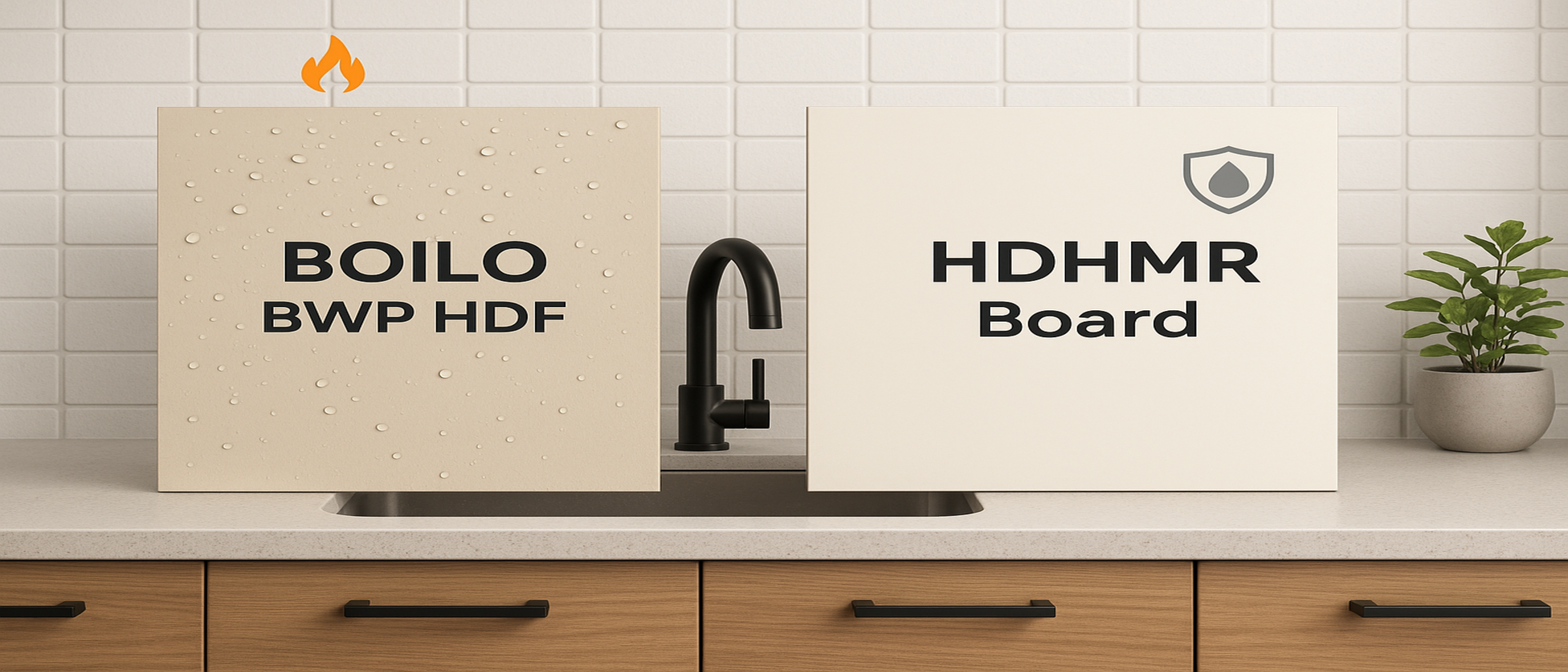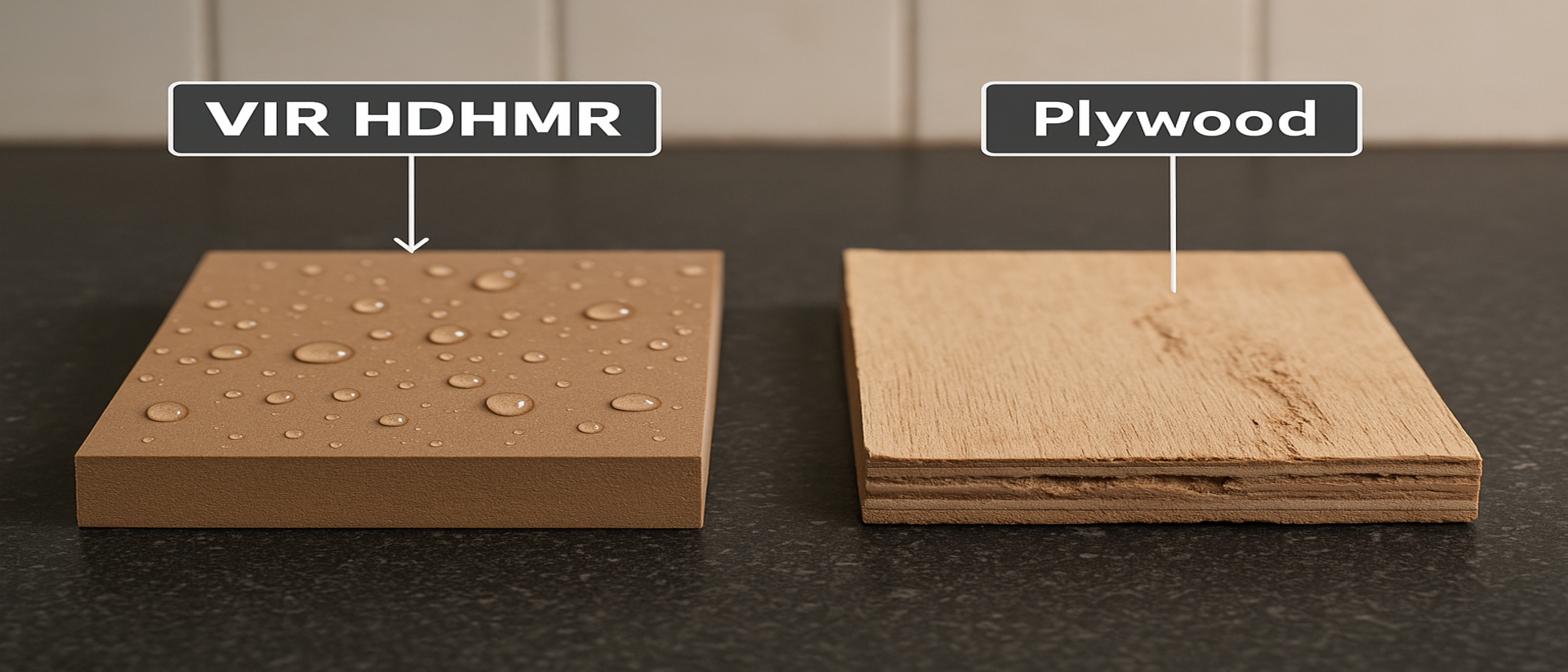Century vs Greenpanel HDHMR – Brand Showdown
Introduction
Century Ply and Greenpanel represent two contrasting philosophies in the HDHMR industry. Century, a long‑established brand, emphasises high density, low formaldehyde emissions and premium finishes. Greenpanel, part of the Greenply group, highlights sustainable manufacturing powered by renewable energy and balanced performance at a competitive price. This comparison dives into technical specifications, price lists, design features and warranties available in 2025 to help homeowners, architects and carpenters decide which board better suits their needs.
Technical Specs & 2025 Price Comparison
Below is a side‑by‑side comparison of Century and Greenpanel HDHMR boards. Pricing and specifications are sourced from official product guides and market reports.
|
Metric |
Century HDHMR |
Greenpanel HDHMR |
Notes |
|
Density |
~850–900 kg/m³ |
~780–830 kg/m³ |
Century’s higher density can improve rigidity and screw holding. |
|
Thickness range |
6–25 mm (plain); 12–25 mm (pre‑laminated) |
3–18 mm (plain); 7–18 mm (pre‑laminated) |
Greenpanel is limited to 18 mm maximum thickness. |
|
Plain board price (approx.) |
12 mm: ₹85–95/sq ft; 16 mm: ₹95–105/sq ft; 18 mm: ₹100–115/sq ft |
12 mm: ₹80–90/sq ft; 16 mm: ₹90–100/sq ft; 18 mm: ₹95–105/sq ft |
Greenpanel boards are generally cheaper across thicknesses. |
|
Pre‑laminated board price |
16 mm: ₹115–135/sq ft; 18 mm: ₹125–140/sq ft; 25 mm: ₹140–160/sq ft |
16 mm: ₹105–120/sq ft |
Century’s pre‑lam boards command a premium; Greenpanel offers fewer thickness options. |
|
Emission & sustainability |
Low Emission Premium Plus range (E0/E1); borer‑proof technology |
Manufactured with renewable energy; antibacterial and eco‑friendly additives |
Century focuses on indoor air quality; Greenpanel on renewable energy. |
|
Warranty & money‑back |
25‑year warranty; 2× money‑back promise |
15‑year warranty; 1.5× money‑back promise |
Century offers a longer warranty but at a higher price. |
Observations
· Price vs thickness: Greenpanel is less expensive across all comparable thicknesses but does not manufacture boards thicker than 18 mm.
· Emission vs sustainability: Century emphasises low formaldehyde emissions and borer‑proof glue lines. Greenpanel prioritises renewable energy and eco‑friendly production, appealing to green‑building projects.
· Warranty: Century’s warranty is longer (25 years) and includes a two‑times money‑back guarantee; Greenpanel offers 15 years with a 1.5× pledge.
Performance Analysis: Strength, Durability & Moisture Resistance
Century HDHMR boards are engineered for high strength. The dense core (up to 900 kg/m³) and high resin content provide excellent screw‑holding, impact resistance and dimensional stability. Moisture content is controlled between 5–7%, and the boards incorporate borer‑proof technology. These features make Century boards suitable for high‑load applications like kitchen countertops and wardrobe carcasses.
Greenpanel boards, with density between 780 and 830 kg/m³, deliver solid performance for most cabinetry and furniture tasks. The boards use renewable energy during manufacture and feature anti‑bacterial additives. Moisture resistance is similar to Century’s, though the lower density means slightly lower screw‑holding capacity. Greenpanel’s focus on abrasion and stain resistance enhances longevity in high‑traffic areas.
In durability terms, Century’s 25‑year warranty suggests confidence in longevity. Greenpanel’s 15‑year warranty is still substantial for residential projects but indicates a shorter expected lifespan. Both boards need proper edge sealing and installation to perform at their best.
Applications / Best Use Cases
Century HDHMR is ideal for premium modular kitchens, office furniture, high‑end wardrobes and any application requiring thick (>18 mm) boards. Designers favour its smooth surface for high‑gloss paint or lacquer and appreciate the low‑emission certification, which is increasingly important in urban homes and commercial interiors.
Greenpanel HDHMR is well suited for environmentally conscious projects, including residential kitchens, wardrobes, retail fixtures and school or healthcare furniture. Its price advantage makes it attractive for large‑scale developments or budget‑sensitive assignments. Because maximum thickness is 18 mm, structural or countertop applications may require additional framing.
Design & Aesthetic Differences
Century offers a diverse range of laminates and veneers in its Low Emission Premium Plus range. High‑gloss, matte, textured and exotic wood patterns allow designers to achieve bespoke looks. The surface quality is consistently smooth, giving painted finishes a refined appearance.
Greenpanel’s aesthetic collection focuses on natural wood grains, subtle textures and earthy colours. While the selection may be narrower, finishes are durable thanks to abrasion and stain‑resistant technologies. For clients seeking understated elegance and eco‑friendly credentials, Greenpanel’s designs are appealing.
Cost vs Value Assessment
Century boards cost more—12 mm boards start at ₹85–95 per sq ft and 18 mm boards climb to ₹100–115 per sq ft, with pre‑lam options up to ₹160 per sq ft. In return, customers receive high density, low emissions, borer‑proof technology and a long warranty. For luxury kitchens or commercial projects where air quality and performance are critical, Century’s price is justified.
Greenpanel boards, priced at ₹80–105 per sq ft depending on thickness, present a cost‑effective alternative. The brand’s eco‑friendly manufacturing appeals to LEED projects and sustainable building certifications. While the warranty is shorter and thickness options limited, Greenpanel boards deliver good value for money in standard cabinetry and furniture.
Brand Reputation & Availability
Century Ply enjoys a strong reputation built over decades in plywood, laminates and engineered panels. Its established dealer network ensures widespread availability and reliable after‑sales support. The company invests in R&D to develop low‑emission and borer‑proof products, and its marketing emphasises premium quality and trust.
Greenpanel, though relatively newer as a separate brand (originating from Greenply), has gained traction through sustainability initiatives. The company uses renewable energy sources in manufacturing and positions itself as eco‑conscious. Its distribution network covers major metros and is expanding into smaller cities. Customers appreciate the brand’s consistent quality and competitive pricing. Some carpenters note that thickness limitations require creative design solutions for heavy counters.
Buyer’s Checklist / Expert Advice
1. Determine thickness requirements: If your project needs boards thicker than 18 mm, Century is the only option among these two. For typical wardrobes and cabinets, Greenpanel suffices.
2. Prioritise air quality vs sustainability: Choose Century for E0/E1 low‑emission requirements and borer‑proof protection. Opt for Greenpanel if renewable energy production and eco‑friendly credentials matter more.
3. Budget accordingly: Century’s premium price may strain budgets but offers peace of mind. Greenpanel delivers solid performance at a lower cost; allocate savings toward hardware or finishes.
4. Visit showrooms: Compare laminate samples to ensure the aesthetic meets your design vision. Century’s range is broader, while Greenpanel emphasises subtle, natural looks.
5. Purchase from authorised dealers: Always verify authenticity through stamps and documentation to avoid counterfeit products.
FAQs
Is Century HDHMR stronger than Greenpanel?
Century boards have a higher density (up to 900 kg/m³) and thicker options, which can enhance rigidity and screw‑holding. However, for standard cabinetry thicknesses (12–18 mm), both brands perform similarly when properly installed.
Which board emits less formaldehyde?
Century’s Low Emission Premium Plus range is rated E0 or E1, indicating very low formaldehyde emissions and making it suitable for health‑sensitive environments. Greenpanel also produces boards with low emissions, but its primary differentiation lies in using renewable energy during manufacture.
Are Greenpanel boards durable?
Yes. Greenpanel boards offer density between 780 and 830 kg/m³ and incorporate anti‑bacterial and stain‑resistant technologies. A 15‑year warranty indicates confidence in durability. Proper edge sealing and installation are still essential.
How do warranties compare?
Century provides a 25‑year warranty with a two‑times money‑back promise. Greenpanel offers a 15‑year warranty and a 1.5‑times money‑back guarantee. Longer warranties often correlate with higher pricing.
Which brand is more eco‑friendly?
Both brands address environmental concerns differently. Century focuses on low formaldehyde emissions and borer‑proof technology, whereas Greenpanel uses renewable energy and eco‑friendly additives. The “greener” choice depends on whether you prioritise indoor air quality or renewable energy sourcing.
Where can I purchase these boards?
Century and Greenpanel HDHMR boards are available at authorised distributors and plywood stores across India. Consult the manufacturers’ websites for dealer locators and verify authenticity at purchase.
Conclusion
Century Ply and Greenpanel occupy distinct positions in the HDHMR market. Century appeals to buyers seeking high density, low emissions, thick boards and long warranties, albeit at a premium price. Greenpanel targets environmentally conscious consumers and developers who value renewable energy, balanced performance and competitive pricing. Ultimately, the right choice depends on your project requirements, budget and environmental priorities. Ready to source the best board? Request a quote or explore more comparisons like Action Tesa vs Greenpanel for a rounded perspective.
Disclaimer: This article is generated using AI-assisted research and is intended for informational purposes only. While we strive for accuracy, readers are advised to verify all technical, pricing, and brand-specific details with official sources. hdhmr.in is not liable for any decisions made based on this content.




